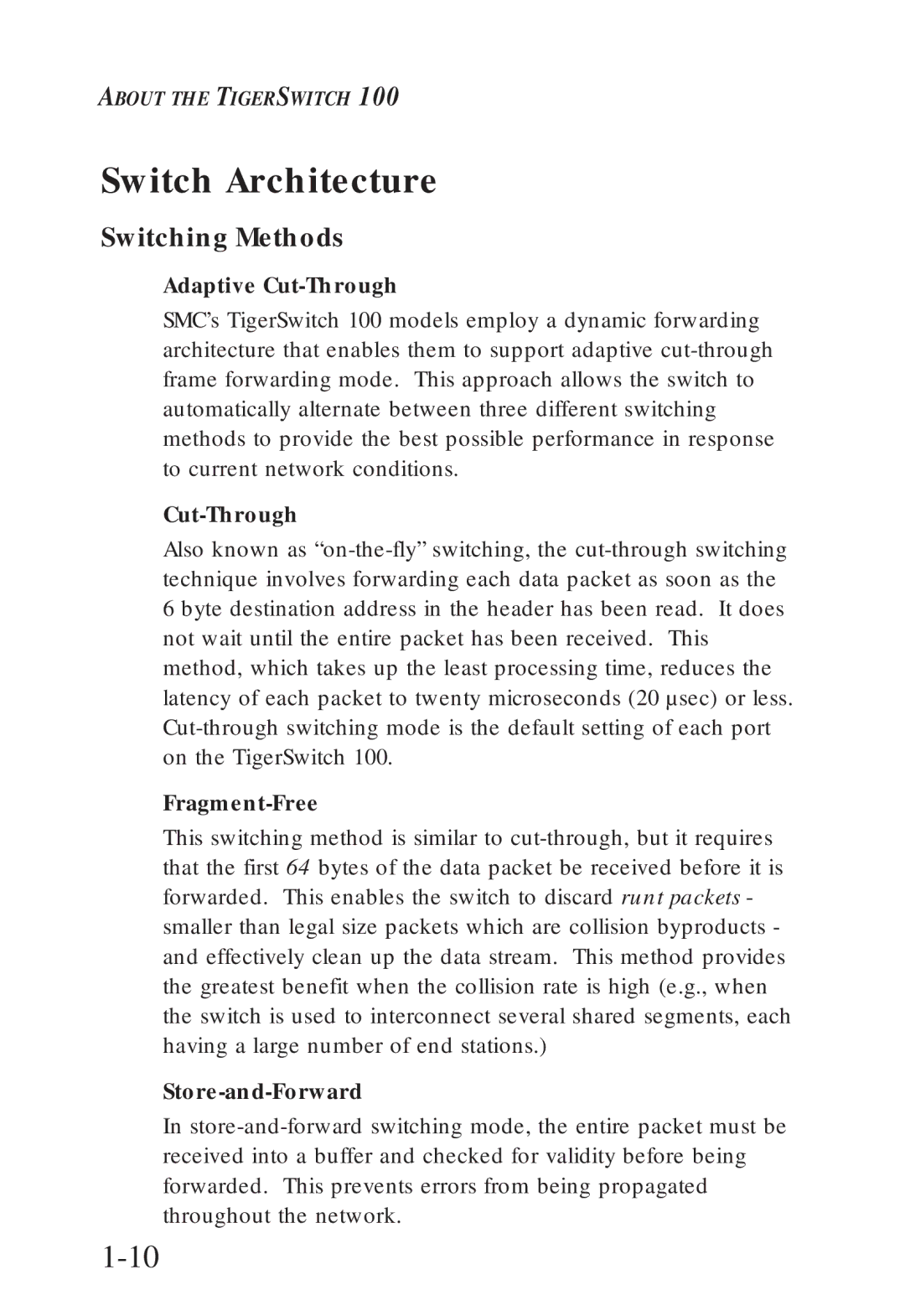ABOUT THE TIGERSWITCH 100
Switch Architecture
Switching Methods
Adaptive Cut-Through
SMC’s TigerSwitch 100 models employ a dynamic forwarding architecture that enables them to support adaptive
Cut-Through
Also known as
6 byte destination address in the header has been read. It does not wait until the entire packet has been received. This method, which takes up the least processing time, reduces the latency of each packet to twenty microseconds (20 µsec) or less.
Fragment-Free
This switching method is similar to
Store-and-Forward
In
